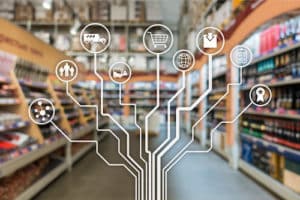Are You Building a Customer Experience House of Cards?
by Betsy Burton
For the past several years, many organizations have rightfully been focused on customer experience management and investing in applications that support rich and highly personalized customer experience. This year, many organizations have also been focused on improving workplace experience by investing in collaboration, content management, and communications solutions in response to the dramatic increase in remote work.
The challenge is that we are finding some of the same organizations are not addressing their back-end data, application fragmentation, and consistency issues. As a result, despite their investments, they are not always able to deliver the customer experience that they need to in order to retain and grow their customer base.
Do Not Ignore Your Back-End Systems
Over the past 4 months we have encountered several examples of organizations that have developed rich customer engagement applications that were built on unreconciled and un-integrated information and application infrastructure.
In other words, they have built their new customer experience solution on an application and information infrastructure house of cards. Inconsistent. Fragile. Fragmented.
Communications Company Limited by Legacy Data
A large communications company has developed new tools to enable customers to manage their account, add services, customize their capabilities, and find answers to common questions. They have even added basic chatbot capabilities.
However, we found that these applications were built on information stores that are 20+ years old, and that are inconsistent and fragmented. For the most standard and basic operations, particularly on new systems, they can support a consistent customer experience.
However, if the customer has any detailed or complex issues, the customer experience begins to degrade dramatically because the company is unable to easily find the information needed to support their issues.
Big-Box Retailers Two Different Customer Faces
We have encountered three large retailers who still store their customer and transaction date for online sales and in-store sales as two different data stores, and even in one case, as two different applications.
The issue is that they all started out as primarily brick and mortar organizations and evolved into digital stores. The problem is a customer who purchases an item through their online sales cannot easily bring an item back to the physical store, and vice versa.
And, even in cases where this is supported, customer service agents and store employees must log into a different application to support returns or exchanges from a different source. The customer experience that they are so concerned about degrades immediately due to inconsistent experience.

Customer experience strategy is a vital concern for any organization. Whether managing backend software or front-end systems, creating customer experience should be at the forefront of enterprise planning.
Government Agency Tells Citizens to Manually Integrate Information
A government agency that supports citizens’ licensing and permitting had made significant investments to try to simplify and streamline a common service. However, they were also telling citizens that they had to go to another department within the same agency to get a piece of information that they needed to complete their process.
Because the systems were not integrated, citizens were being told to physically go to another department in the same building—during a pandemic—so they could share critical dependent documents.
Don’t Waste Your Investments Due to Lack of Architectural Thinking
In all of these cases, the organizations were making investments into people, process, and technology interfaces to support their customers/constituency, partners, and suppliers more effectively. However, these investments were ineffective if the customer had any complex issues because the back-end systems were not integrated.
These organizations were so focused on solving a very specific customer experience problem/opportunity that they didn’t consider the larger and broader architectural impact of these decisions. Further, they were building their customer experience based on a very limited case that fell apart if the customer had even a slightly complex request.
Bottom Line
Customer experience is not defined by your business; it is defined by the real experience your customers have when they engage with your business.
To support a positive customer experience, customer experience management, customer engagement, and employee engagement solutions must consider both the vertical and horizontal integration requirements.
· What types of front-end applications and services do customers need to access to support their needs and deliver an engaging customer experience?
· What different types data and enterprise applications need to be integrated to support customers more complex issues?

Have a Comment on this?